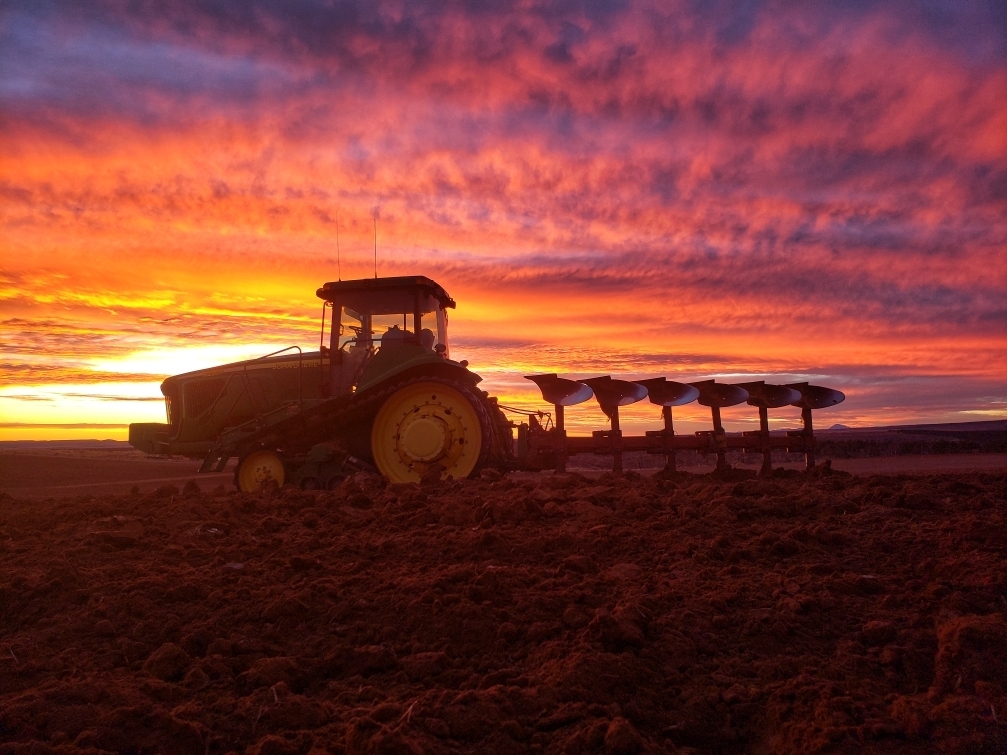
Farm Bankruptcies On The Rise Nationally, Most Pronounced For Northwest Families
LISTEN
BY KATE DAVIDSON / OPB
The number of family farms seeking bankruptcy protection grew 24% over the last year, according to an American Farm Bureau Federation analysis of recent federal court data.
The analysis found family farm bankruptcies are rising fastest in the Northwest.
“We’ve seen low crop prices, low livestock prices for a number of years now,” said chief economist John Newton. “On the back, now, of that we have the trade war where agriculture’s been unfairly retaliated against.”
Newton monitors Chapter 12 bankruptcy filings as one measure of health for the farm economy. Chapter 12 is a kind of bankruptcy protection meant to help family farmers reorganize and keep farming.
Nationwide, 580 family farms filed for bankruptcy in the 12-month period ending in September 2019. Newton considers that a sign of poor health.

Courtesy of the American Farm Bureau Federation
“While it’s nowhere near the historical highs we saw in the ‘80s, it’s an alarming trend that continues to get worse,” he said.
Newton said farmers are also assuming record debt and taking longer to pay it back.
“I’m getting calls from farmers across the country that may not be at Chapter 12 bankruptcy point, but they’re very close to it,” he said.
Thirty-three farms in the Northwest filed for Chapter 12 protection over the time period measured. Most of them were in Idaho and Montana, but the figure includes Oregon apple farmers struck by tariffs in their major export markets.
Richard and Sydney Blaine, for example, filed for Chapter 12 protection just days after President Donald Trump signed a law this summer making it easier to access. The Family Farmer Relief Act increased the amount of debt a farmer can have —$10 million — and still qualify for Chapter 12 protection.
The 33 Northwest bankruptcies represent a 74% increase over the previous year, according to the American Farm Bureau’s analysis. The size of the increase appears large in part because the Northwest previously had fewer bankruptcy filings than some other regions, such as the Midwest.
Still, economist John Newton said each Chapter 12 bankruptcy matters.
“These are family farms,” he said. “And these are family farms that are having to restructure their debt due to tough financial conditions in agriculture.”
Because of the new bankruptcy rules, more farms could seek protection in the months ahead.
Copyright 2019 Oregon Public Broadcasting. To see more, visit opb.org
Related Stories:

The dirty work of owning mason bees
Every October in the backyard of a Bothell home, a team of workers swarm around millions of blue orchard mason bees, to harvest the hibernating bees.
The company, Rent Mason Bees, quickly takes apart and cleans the wooden nesting blocks that gardeners and farmers across the state use in the spring to house these tiny pollinators. The company offers this service as part of its mason bee rental program.

New funding to build farmworker housing in the Pacific Northwest, nationwide
The United States Department of Agriculture is soliciting applications for funding to build farmworker housing nationwide.
In the Pacific Northwest, leaders hope the money can address gaps in farmworker housing. The Pacific Northwest is in a housing crisis and that impacts rural small businesses and agricultural producers, as well as farmworkers, said Helen Price Johnson, who is the Washington State Rural Development director for the USDA.

‘Vintage year’ for apple crop, experts say the weather was just right
Freshly picked red delicious apples gather in a bin. Northwest red delicious and galas are again shipping to India after tariffs were lifted. (Courtesy: Washington Apple Commission) Read Many Northwest
















